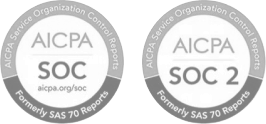ACH Credit
Article Navigation
In the digital economy, seamless money movement is vital for payroll, vendor payments, reimbursements, and business growth. One of the most trusted systems powering these transactions is the Automated Clearing House (ACH) network. While ACH might sound technical, it is used millions of times a day by businesses and individuals alike. Within this system, ACH credit plays a central role.
This guide serves as an in-depth glossary, explaining ACH credit transfers and ACH credit payments in practical terms. It also covers how they work, why they matter, and how they differ from other forms of electronic transactions.
What is ACH Credit?
ACH credit refers to an electronic payment where money is sent, or “pushed,” from a payer’s bank account to a recipient’s account using the ACH network. This type of transaction is initiated by the sender. The most common example of this is direct deposit payroll, where an employer sends salary payments directly into employees’ bank accounts.
Other examples include:
- A business sending a vendor payment
- A consumer paying a bill online
- A government disbursing a tax refund or benefit payment
- A person sending money to a friend through a peer-to-peer payment app
ACH credit is not just one tool among many. It is one of the most trusted and cost-effective ways to move money in the United States, with over 33 billion transactions processed in 2024 alone.
How Does an ACH Credit Transfer Work?
Understanding how ACH credit transfers work requires a look at the roles played by financial institutions.
Here is a simplified overview of the process:
- Initiation by the Sender: The person or organization sending the payment (known as the originator) provides their bank or payment processor with the details of the transaction. This includes the recipient’s bank account number, routing number, payment amount, and target delivery date.
- Submission by the ODFI: The sender’s bank, officially known as the Originating Depository Financial Institution (ODFI), bundles the request into a batch and submits it to the ACH network. The network processes these batches several times per day.
- Processing by the ACH Network: The ACH network separates each batch into individual transactions and reroutes them to the appropriate recipient banks, known as Receiving Depository Financial Institutions (RDFIs).
- Settlement and Delivery: If everything checks out and no errors are detected, the funds are moved from the sender’s bank to the recipient’s account. Settlement between the two banks is handled using their balances with the Federal Reserve.
The recipient usually sees the funds in their account within one to two business days. Same-day processing is possible for an added fee and can significantly reduce the wait time.
What is an ACH Credit Payment?
An ACH credit payment is any transaction in which funds are transferred electronically from one bank account to another by the sender’s instruction. Unlike ACH debit, which allows the recipient to request money from someone’s account, ACH credit requires the sender to take action.
For most people, their first experience with ACH credit is through their employer’s payroll system. Other common ACH credit payments include:
- Paying utility or service providers through your bank’s bill pay system
- Transferring money from one personal account to another
- Disbursing refunds or reimbursements from an organization to an individual
The key attribute of ACH credit payments is that they are push-based. This gives the sender more control over the transaction, making it ideal for regulated, scheduled, or repeat payments.
ACH Credit vs ACH Debit: Key Differences
To fully understand ACH credit, it is important to compare it with ACH debit. Both use the same ACH network, but they function in very different ways.
| Feature | ACH Credit | ACH Debit |
|---|---|---|
| Who initiates the transaction | The sender (payer) | The receiver (payee) |
| Direction of funds | From the payer to the payee | From the payee’s request to the payer |
| Common use cases | Payroll, bill pay, government payments | Subscription billing, utility payments |
| User experience | You send money | Someone pulls money from your account |
ACH credit is about sending funds with intention. ACH debit is about authorizing another party to take funds from your account on your behalf.
What Happens if There is a Mistake?
Although ACH credit transactions are generally safe and reliable, mistakes can happen. In those rare cases, refunds also known as ACH returns can be requested under specific conditions. According to Nacha (the governing body for the ACH network), refunds may be processed if:
- The payment was for the wrong amount
- The payment was sent to the wrong recipient
- There was a duplicate transaction
- The wrong settlement date was entered
The bank acting as the ODFI must submit a refund request within five business days of the original settlement. However, there is no absolute guarantee that the funds will still be available in the recipient’s account, so time is of the essence.
How Much Does an ACH Credit Transfer Cost?
The ACH network itself charges fractions of a cent per transaction. However, depending on the financial institution or payment processor, the cost of an ACH credit transfer can range from $0.20 to $1.50 per transaction.
Several factors affect pricing:
- Volume of monthly transactions
- Transaction value
- Risk of payment return
- Whether same-day delivery is required
- Method of account verification used
While these costs might seem high for a small business at first, the savings add up quickly compared to wire transfers or physical checks. As volume grows, average costs drop significantly.
Why ACH Credit Matters More Than Ever
ACH credit is not just a tool for businesses; it is becoming an infrastructure layer for modern commerce. As organizations seek automation, real-time visibility, and reduced error rates, ACH credit offers a proven and scalable solution.
For payroll providers and HR technology companies, ACH credit remains the gold standard for disbursing wages. When paired with AI tools for anomaly detection, compliance monitoring, and payment reconciliation, it creates a powerful, modern approach to workforce compensation.
The Future of ACH Credit
The ACH system is over 40 years old, yet it continues to evolve. New innovations like Plaid Auth are making it easier to verify account information and accelerate onboarding. Meanwhile, systems such as Real-Time Payments (RTP) and the Federal Reserve’s FedNow are introducing additional options for instant settlement.
Despite these newer alternatives, ACH credit remains the preferred rail for high-volume, business-critical payments. Its maturity, security, and reliability make it the trusted foundation for payroll, accounts payable, and recurring financial activity.
Conclusion
Understanding ACH credit, how it works, and how it differs from other payment methods can empower businesses to streamline operations, reduce costs, and deliver better experiences to employees and customers alike. Whether you are a finance executive, HR leader, or startup founder, mastering ACH credit payments is key to building an efficient and scalable payment strategy in today’s digital world.































 Back
Back